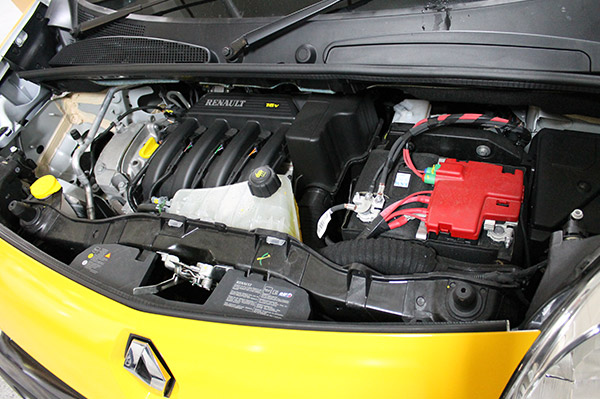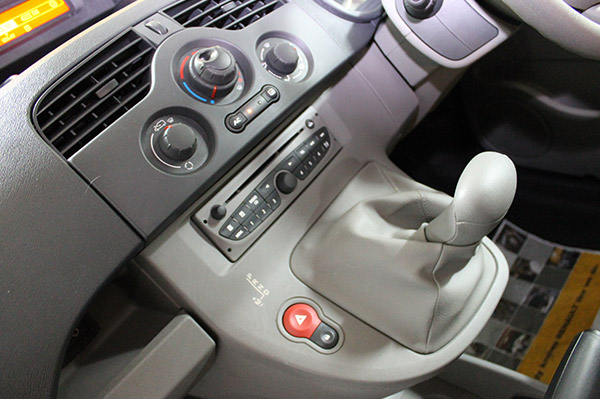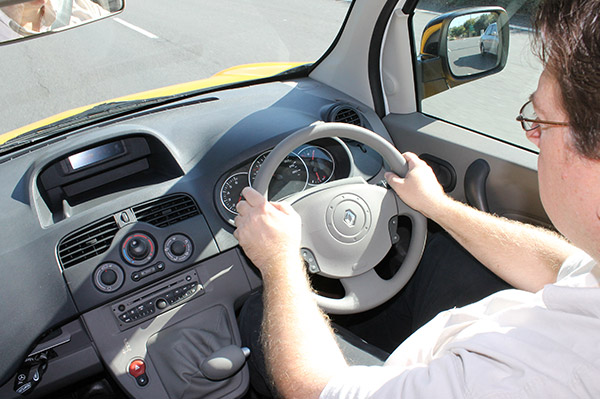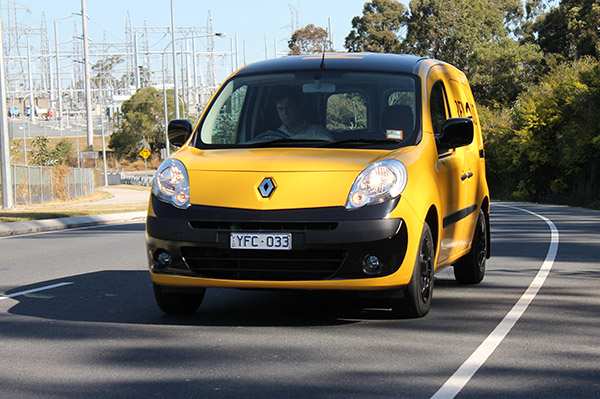The Renault Kangoo van range is quite popular in Europe. In Australia, however, Renault vans remain something of a bit player. Gary Worrall reviews the latest in the Renault Kangoo range.
With new brand management locally and a head office that is keen to increase global sales, backed up by new models and an aggressive marketing strategy, Renault is set to dramatically increase its local presence.
Of course, starting from a low base means any gains will look significant, but the key is year-on-year growth, and that’s what the French are chasing, starting with the just re-vamped Kangoo mini-van.
Unlike passenger car design, where artists have basically a free hand to come up with something that is fresh, the commercial market is a lot tougher, with specific criteria such as load space and minimum dimensions, playing havoc with free-wheeling creativity.
This means the Kangoo, a challenger to Volkswagen’s well-known Caddy family, is always going to look like what it is, a small van pulled by a two-seat locomotive, with front drive the preferred option for getting the power down.
Beyond that, however, the drawing board got a decent workout on the latest Kangoo, which incorporates a swoopy front end with an upright driving position, while the load space offers plenty of room for what can be pretty odd cargo.
The wheelbase is virtually the length of the car, with only minimal overhangs front and rear, which endows the Kangoo with go-kart-style handling, but also spectacular approach and departure angles, with an overall height of less than 1.8m.
In keeping with passenger car design ethos, bearing in mind this isn’t a highway hauler or off-road runabout, the heaviest bits are close to the ground, lowering the centre of gravity and counteracting the tendency of the cargo to induce sway during cornering.
Unlike some larger vans that bludgeon their way through the space in front of them, the Kangoo has the advantage of a full bonnet and sloping nosecone to pierce the air, with the slipstream directed up and over the canted windscreen and curved roofline.
This reduces the overall effort required, which for operators means less time spent at the pump filling the tank.
From a load security perspective, not having side windows on the box is a good thing, with plenty of visibility through the driver, passenger and rear windows, the rears can be tinted to discourage opportunistic ‘downloading’ of freight.
Even better, Renault has programmed the remote central locking to only open the driver’s door on the first press, while a long press of the lock button will deadlock all doors to prevent unauthorised access.
The test vehicles were from the last batch of 2010-production models, which means dual barn doors on the back and a single slider on the left, where all production from 2011 onwards will get twin sliders as standard.
Engine
Testing the Renault Kangoo line-up, I found the engines are more than happy to spin all the way to redline, for anyone who has yet to experience a modern high-speed diesel, these units are an absolute revelation. The only way to be certain they’re not petrol engines is to check the redline, with 1.5-litre diesels capped at around 5,000rpm while the 1.6-litre petrol unit stops at 7,000rpm.
The diesel version is also rated for heavier loads with a nominal payload of 800kg, compared to the petrol, which is limited to 650kg — although in reality it would be very rare that either version is loaded to its GVM.
While the driver has the option of a tubular bulkhead to protect them from flying freight in an accident, Renault also includes tie-down points in the rear allowing cargo nets or load restraints to be used to reduce unexpected movements.
Best of all, both engines are equally at home creeping through 40km/h roadworks or school zones as they are running down the highway at 110km/h, just engage the cruise control and sit back and relax while the engine does all the hard work.
Transmission
During the test, two transmissions were on offer. The 1.6-litre petrol Renault Kangoo featured a 4-speed automatic, while the 1.5-litre diesel version had an electronically controlled 5-speed manual transmission.
Both the manual/diesel and automatic/petrol versions were tested, and the clutch and gearshift in both are easy to use, with just enough pressure on the clutch spring to provide feel without making it heavy.
The gearshift falls perfectly to hand for fast, flowing shifts making this a courier’s dream, the return spring on the shift brings it perfectly in line for the 3-4 shift, allowing the lever to follow its natural course provides fluid single movement shifts between gears, so there’s no need to fight the gearbox.
On the automatic, the simplest solution is to leave it in ‘D’ (Drive) and allow the well-matched engine and gearbox to synchronise the shifts, with just the right amount of slurring to make upshifts as smooth as cream.
There is a minor delay built into the kickdown to allow the engine to build revs and open the injectors to get more fuel into the engine, then the tacho needle spins around the clock as the Kangoo leaps ahead.
The auto is also impressive for its willingness to use plenty of revs in the manual mode. On a couple of downhill runs it was possible to hold third and even second all the way to redline, before the transmission would shift up to prevent damage to the engine.
It also allows the driver to avoid using the brakes as much as possible on steep descents, which means they’re available when they’re needed rather than being overheated and with reduced stopping power.
Cab and Controls
Not only is the Kangoo new on the outside but the interior has also had a slight makeover, in line with changes to its Clio passenger sibling.
The flat-faced steering wheel is a familiar item, appearing in other Renault products, and brings new meaning to the term ‘multi-function’, or possibly even ‘race bred’, given the company’s involvement in Formula 1 car racing.
While the cruise control and speed limiter buttons on the top are easily visible, it’s the multitude of switches tucked away under the right-hand side that brings to mind visions of Aussie racer Mark Webber offering a truly express delivery service.
Completely blind to the driver, the switches control audio volume for the combination AM/FM radio/CD/MP3/iPod player/Bluetooth telephone. Select between audio options or the telephone, tune the radio or shuffle the music player backwards and forwards.
Then there’s the stubby wiper stalk for both front and rear wipers, including variable speed intermittent mode, with thumb switches on the end for the central information display in the instrument panel.
While it sounds complicated, the system is quite intuitive and takes less than an hour of driving to master. This actually offers improved road safety, as the whole vehicle can be operated by just two fingers without the driver needing to look away from the road.
The seats themselves are surprisingly comfortable, if flat to look at, offering plenty of support and capable of being manually adjusted for height, reach and seatback rake.
Add to this the steering wheel adjustments for height and reach and virtually any body shape can be accommodated without difficulty.
During the accompanying photo and video shoot, the Kangoo carried probably the two biggest people who could have worked together, both standing well over 185cm tall and almost the same across the shoulders.
Despite this, the Kangoo never felt cramped or tiny, gear shifts in the manual version were accomplished without synchronised breathing by the occupants, with a similar amount of headroom allowing for inflated egos.
While the overall package is impressive, Renault has managed a couple of distinctly French quirks, just to remind operators who designed and built the Kangoo.
The most prominent is the park brake, which resembles the throttle lever from a passenger jet, unfortunately in the ‘off’ position it is close to the floor with the release button around the driver’s ankles.
Although it is out of the way while driving, it becomes a problem if the driver needs to grab it in a hurry, as it requires even tall people to lean forward and pull it towards them to apply it, and then the reverse to release it.
Also odd, particularly for a French design, the central drink holder is then in the way when the brake is applied, putting that latte grande at risk of spilling across the cab because it’s crushed under the driver’s forearm.
The other difficulty is the switch for the cruise control and speed limiter, which is a three-way rocker placed under the curve of the dash on the driver’s right, so that it is virtually invisible during normal driving.
While Australian conditions would hardly ever warrant the use of a speed limiter, although temporary 40km/h limits for school zones and road works do spring to mind, having it mounted out of sight can lead to a certain amount of fumbling around trying to find and then use the button.
Other than these quirks, the Kangoo is straightforward to operate, with commonly-used controls like the air-conditioning system featuring large, easily-gripped switches or rotary knobs that reduce the need for the driver to look away from the road to make minor adjustments.
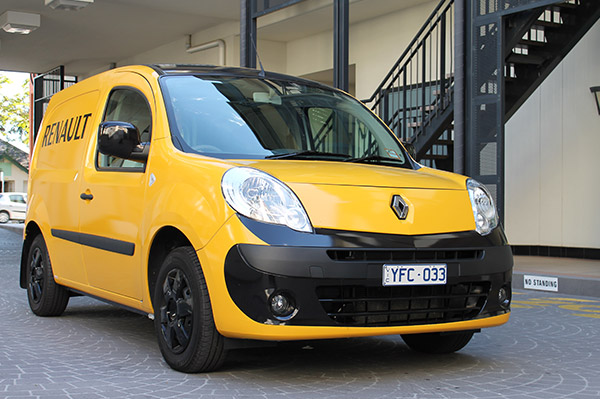
Performance
Having tested both the diesel and petrol, it’s safe to say they’re a pair of spirited performers, even with the petrol available only with an automatic transmission.
Based on the readings taken by the on-board computer, fuel consumption for both is on the sipper side of frugal, with the diesel averaging around 5.5 litres per 100km, while the auto-only petrol was still handy at less than 9 litres per 100km.
The Kangoo is designed for intra-urban operations, going into restricted zones such as inner-city buildings where larger vehicles would struggle because of either overall height or length or both, or due to increasingly tough laws prohibiting vehicles over a certain size from entering CBD areas.
Although these laws are more common in Europe and parts of Asia, the potential for generating revenue means it’s case of when, not if, these laws are enacted within Australia.
For this reason, the Kangoo, with its low ride height and tall cargo area is perfect for these tasks, carrying everything from bags, cartons and satchels to advertising and marketing displays, which are often light but bulky.
Factor in the aforementioned wheel-at-each-corner design and the Kangoo is highly manoeuvrable, able to negotiate the toughest of turning spaces, allowing it to access obscure loading docks, while the light GVM means it avoids the eagle eye of the regulator.
Large external mirrors make reversing and parking simple with clear fields of view, the only downside is the curved nose can sometimes disappear however even a brief familiarisation period inspires confidence in predicting where the corners are.
As mentioned, the current models now have twin sliding doors, another bonus in one-way traffic areas allowing the Kangoo to be parked on either side of the road and still be unloaded from the safety of the kerb.
The rear barn doors open to the full body width, which eliminates wasted space, while the wheel arches do not project into the load space so that even small skids can be carried if a forklift is available.
Verdict
Despite being a relatively new segment to Australia, the inner-urban light duty commercial, for want of a better description, is here to stay and is likely to be dominated by the Europeans for at least the foreseeable future, given the head-start they enjoy over the competition.
While the Volkswagen Caddy is the current people’s choice due to a combination of quality and reputation, the Kangoo is a strong chance of upsetting the status quo, especially with Renault offering ultra-competitive finance packages to encourage brand switching.
Having driven both brands in recent times, the Kangoo is a worthy challenger, with the only chink in its armour the lack of a DSG-style automated manual in what is otherwise a very competent package.
While it isn’t without foibles, albeit the relatively minor ones mentioned earlier, the Kangoo is a solid performer offering plenty of comfort, and is worth a test drive.
Likes:
- Sparkling performance from both versions
- Ease of operation
- Excellent turning circle for restricted clearance operations
- Plenty of driver comfort
- Remotely-lockable rear doors
Dislikes:
- Some switches fiddly to operate
- Handbrake too low on floor
- Handbrake operation fouls centre drink holder
Specifications
Make/Model: Renault Kangoo
Body: Two-person, light duty commercial van with sliding side doors and twin barn doors at rear
Engines: 1.6-litre petrol, electronic fuel injection, four cylinder engine, four valves per cylinder; 1.5-litre diesel, turbocharged, common rail fuel injection, four cylinder engine, two valves per cylinder
Power/Torque: 1.6 petrol 78kW/148Nm 1.5 diesel 63kW/200Nm
Transmission: 1.6 petrol 4-speed automatic; electronically controlled 1.5 diesel 5-speed manual
Emission Standard: Euro 4 (both versions)
Safety: ABS with Electronic Brake Distribution and Emergency Brake Assist; front driver’s airbag; height-adjustable seatbelts with built-in pre-tensioners and load-limiters; side impact bars in front doors
GVM: 1.6 petrol 1949kg payload 650kg (max); 1.5 diesel 2077kg payload 800kg (max)
Wheelbase: 2697mm
Sill Height: 588mm to 609mm (max)
Load Width: 1141mm at top (minimum)
Load Height: 1251mm

